Understanding the Scope and Impact of Cell Phone Addiction
Cell phone addiction has become a pervasive issue in modern society, with the proliferation of smartphones reshaping daily routines, social interactions, and mental health. As smartphone ownership reaches nearly universal levels, the pattern of excessive usage presents substantial concerns across health, social, and behavioral domains. This article explores the latest statistics and facts about cell phone addiction, highlighting its prevalence, psychological effects, health implications, demographic variations, and current trends.
Prevalence and Usage Patterns of Cell Phone Addiction in the U.S.
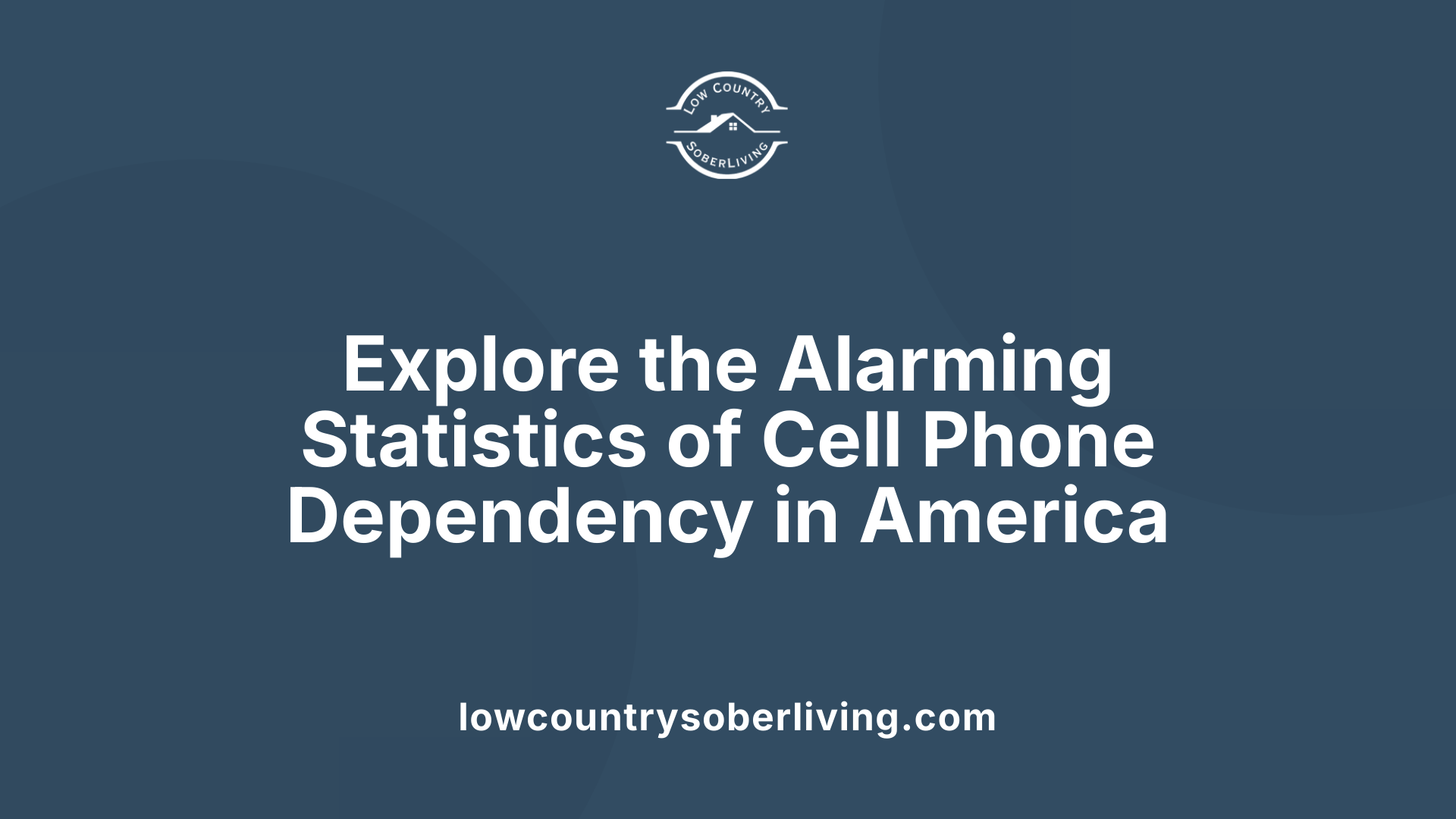
What are the general statistics and facts about cell phone addiction?
Smartphone addiction has become a significant issue in the United States, affecting a large portion of the population. About 56.9% of American adults admit to being addicted to their phones, according to a 2023 study. Additionally, approximately half of all adults, around 50%, feel uneasy when they leave their phones at home, highlighting the emotional dependence many have developed.
On average, Americans spend over 5 hours and 16 minutes daily on their smartphones—a figure that has increased by 14% from the previous year. This extensive use is paired with frequent interactions; users unlock their devices roughly 150 times a day and check their phones approximately 144 times daily. Such high engagement levels are linked to various health concerns like eye strain, neck pain, headaches, anxiety, and sleep disturbances.
The social implications are equally concerning. Over 20% of car accidents involve phone use, primarily distracted driving. Many users report spending more time on their devices than with loved ones, with 71% sleeping with or next to their phones. Moreover, a large proportion of users experience emotional attachment issues, such as nervousness if they don’t know where their device is, and reliance on their phones to regulate mood.
Overall, the widespread dependency impacts mental, physical, and social well-being across different age groups and demographics.
What is the current trend regarding smartphone dependency?
The trend of smartphone dependency continues to escalate, both worldwide and in the United States. Over half of Americans—around 57%—admit to being addicted, and many demonstrate behaviors characteristic of dependency, such as checking their phones nearly 145 times a day and spending over five hours daily on their devices.
Younger demographics, particularly Gen Z, are the most engaged, averaging about 6 hours and 27 minutes on their phones daily. They also report feeling that their mental and social health could benefit from reduced usage. Despite growing awareness of potential health risks—including eye strain, sleep issues, and mental health concerns like depression and anxiety—dependency persists.
Many users find it challenging to break free from their devices; 84% of adults cannot go an entire day without their smartphones, and 60% sleep with their phones beside them. Efforts to lessen reliance are often hindered by the dopamine-driven reward system triggered by notifications and alerts, which reinforces continuous checking.
The ongoing growth in device usage underscores the urgent need for strategies to address dependence, especially among youth, as the implications for mental and physical health become more apparent. Despite some movements toward digital detoxing, the trend indicates that smartphone dependence remains an ingrained part of daily life for much of the population, especially as social media, instant messaging, and constant connectivity become more integrated into everyday routines.
| Aspect | Statistic | Additional Notes |
|---|---|---|
| Smartphone ownership rate | 97% of Americans own a cell phone | 90% of these are smartphones |
| Average daily usage time | Over 5 hours and 16 minutes | 14% increase from 2024; Gen Z spends over 6.5 hours |
| Phone unlocking frequency | Around 150 times per day | Reflects high engagement and dependence |
| Social media and related use | 4 hours and 25 minutes weekly | Significant part of daily engagement |
| Dependency among teens | 50% feel addicted; 26% are actually addicted | Higher than adults, with teens constantly online |
| Health and social impacts | Sleep disturbances, anxiety, eye strain, car accidents | Emphasizes widespread consequences |
Overall, the data depicts a pattern of increasing reliance on smartphones, raising concerns about health, safety, and social well-being.
Psychological and Behavioral Effects of Cell Phone Addiction
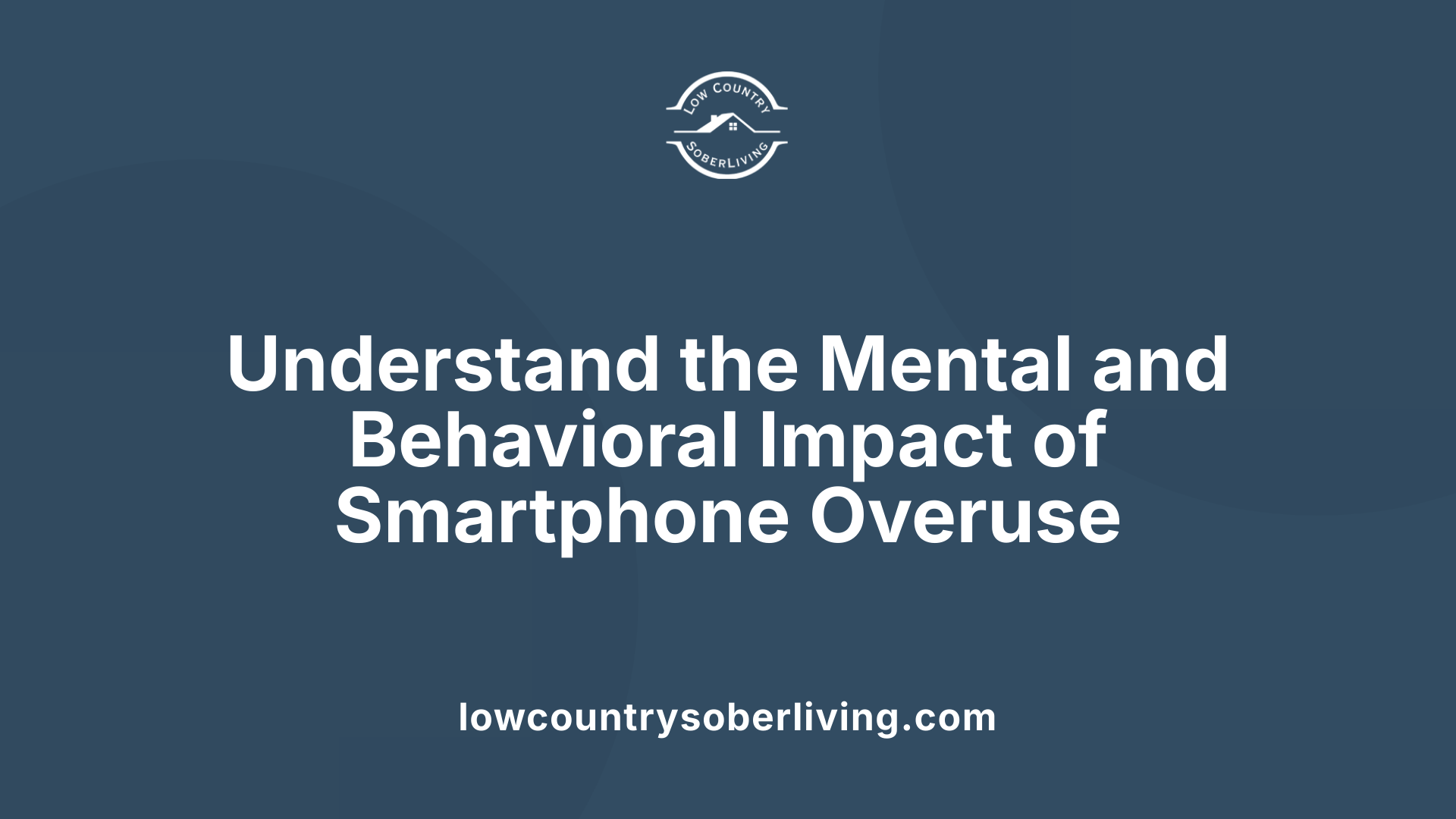
What are the psychological and behavioral effects of cell phone addiction?
Cell phone addiction can significantly impact mental health and daily behaviors. Individuals suffering from this dependency often experience heightened levels of anxiety and depression. These feelings are often exacerbated by the constant influx of notifications, social comparison through social media, and the quest for validation, which can lead to feelings of inadequacy and low self-esteem.
Heavy use of social media platforms and persistent alerts contribute to sleep disturbances and emotional instability. Users may begin to develop compulsive habits, such as repeatedly checking their devices, even during social interactions or while performing important tasks. This habitual checking reinforces a cycle of reassurance-seeking and fosters fears like FOMO (fear of missing out), which further worsens anxiety and depression.
Research shows that prolonged and excessive smartphone use can induce structural changes in the brain. Notably, it is linked with a reduction in grey matter in regions responsible for attention control, creativity, and concentration. These neurological changes can diminish a person's ability to focus, think clearly, and engage effectively in real-world social interactions.
Furthermore, these behavioral patterns contribute to overall mental well-being deterioration. Individuals may find themselves overwhelmed by feelings of loneliness, irritability, or helplessness. The dependency also impairs their capacity for emotional regulation, making it harder to manage everyday stressors. To combat these adverse effects, methods such as cognitive-behavioral therapy, digital detoxes, and setting app usage limits are recommended.
What signs indicate cell phone addiction?
Recognizing cell phone addiction involves observing specific behavioral, emotional, and physical signs. Excessive use is often characterized by frequent and compulsive checking of devices—sometimes hundreds of times daily. A person may feel unable to resist the urge to look at their phone, even during conversations, meals, or while driving.
Emotionally, addicted individuals frequently display symptoms such as anxiety, irritability, and depression when they are separated from their devices or cannot access their phones. They may also suffer from FOMO, constantly fearing they are missing out on social events or important updates.
Physical symptoms include sleep problems, with many sleeping alongside or with their phones by their bedside. Others experience physical discomforts, such as eye strain, neck and shoulder pain ('text neck'), dry eyes, or headaches resulting from prolonged screen exposure.
Behavioral signs extend beyond physical symptoms, involving neglect of responsibilities, social conflicts, and reduced productivity. Affected persons often report a loss of control over their usage patterns, prioritizing their phones over social duties or personal well-being.
Overall, these signs reflect an unhealthy attachment to smartphones, underscoring the need for balanced use and awareness of potential dependency issues.
| Aspect | Signs & Symptoms | Additional Notes |
|---|---|---|
| Emotional | Anxiety, irritability, depression, FOMO | Worsened by social comparison & validation-seeking |
| Behavioral | Frequent checking, neglect of responsibilities, social conflicts | Loss of control, compulsive use |
| Physical | Sleep disturbances, eye strain, neck pain, dry eyes | Repetitive use affects physical health |
Understanding these signs can help individuals and caregivers identify problematic usage early and implement strategies to reduce dependency.
Effects of Cell Phone Addiction on Health and Social Well-being
What are the effects of cell phone addiction on health and social well-being?
Cell phone addiction can have a profound impact on both physical health and overall social well-being. Physically, excessive use often leads to sleep disturbances, eye strain, neck and shoulder pain, and reduced physical activity. Many users spend hours glued to their screens, which can result in poor sleep quality, fatigue, and even long-term musculoskeletal issues. Socially, overreliance on smartphones frequently causes social withdrawal, decreasing meaningful in-person interactions. This can lead to feelings of loneliness, social isolation, and depression, particularly among younger users who spend a significant portion of their time online.
On the mental health front, problematic smartphone use is linked to increased anxiety, stress, and mood disorders. Constant notifications, social media comparisons, and the compulsive need to check devices can foster low self-esteem and irritability. The dopamine loop created by receiving alerts reinforces addictive behaviors, making it difficult to detach from screens.
Overall, smartphone addiction presents multiple risks to physical health and social-emotional stability. Addressing these issues requires developing mindful usage habits, setting clear boundaries, and prioritizing face-to-face interactions and offline activities to maintain well-being.
How do smartphone addiction and social media impact relationships?
Excessive use of smartphones and social media can detrimentally affect personal relationships. Many individuals spend more time engaged with their devices than with loved ones, which diminishes the quality of face-to-face interactions.
This digital dependency can lead to misunderstandings and emotional distance, causing relationship conflicts and dissatisfaction. For example, using phones during shared activities or conversations can signal disinterest, weakening emotional intimacy. Moreover, the need for social validation on platforms like Instagram or Facebook often heightens anxiety about social status, further straining relationships.
Research indicates that frequent phone use during social situations reduces meaningful communication and increases feelings of loneliness. Recognizing these patterns is essential for fostering healthier relationships. Setting boundaries, such as designated device-free times or areas, and prioritizing quality time can help restore emotional connections and reduce dependence on screens.
| Impact Area | Effect | Additional Details |
|---|---|---|
| Sleep | Poor sleep quality | 64.2% of bedtime smartphone users experience disrupted sleep |
| Physical Health | Strain and pain | Common complaints include wrist, hand, neck pain, and eye strain |
| Social Interaction | Reduced face-to-face contact | Over 70% spend more time on devices than with romantic partners |
| Mental Health | Increased anxiety and depression | Many users report feeling anxious if they don’t have their phones |
| Relationships | Emotional distance | Phone dependency can lead to misunderstandings and reduced intimacy |
This overview underscores the intertwined effects of device overuse on both physical health and social relationships, emphasizing the importance of balanced digital habits for overall well-being.
Demographic and Regional Differences in Cell Phone Addiction Rates
Are there demographic or regional differences in cellphone addiction rates?
Research reveals notable variations in cellphone addiction across different demographics and regions. Younger populations, especially adolescents under 20 and young adults under 30, tend to exhibit higher rates of problematic phone use. Data shows that about 50% of teens and 26% of college students are considered genuinely addicted, often checking their devices over 100 times daily and feeling anxious without their phones.
Older adults, like Baby Boomers, generally spend less time on their phones—around four hours per day—compared to Gen Z, who averages nearly 6 hours and 30 minutes. This demonstrates a clear age-related trend, with younger generations more susceptible to dependency.
Gender differences also influence patterns of phone use. Studies suggest women are more prone to dependence related to social and emotional engagement, driven by social media interactions and communication needs. Men, on the other hand, often use smartphones more for practical purposes, such as work-related tasks.
Socioeconomic factors significantly impact smartphone dependency as well. Data indicates that dependence is higher in households with lower income, specifically among those earning less than $30,000 annually, where reliance on smartphones for internet access is around 28%. Educational status can influence usage behaviors, with some evidence suggesting varying dependence levels across different educational backgrounds.
Regional and cultural influences are prominent too. Countries like South Korea and Iran report higher dependence, often linked to societal and technological factors. China's implementation of regulations to limit teenage usage and reduce problematic behaviors reflects awareness of these issues.
Overall, demographic aspects such as age, gender, ethnicity, and cultural attitudes significantly contribute to the disparities in cellphone addiction rates. These differences highlight the importance of tailored approaches in addressing dependency and promoting healthier usage habits worldwide.
Global Perspective on Smartphone Dependency and Regulations
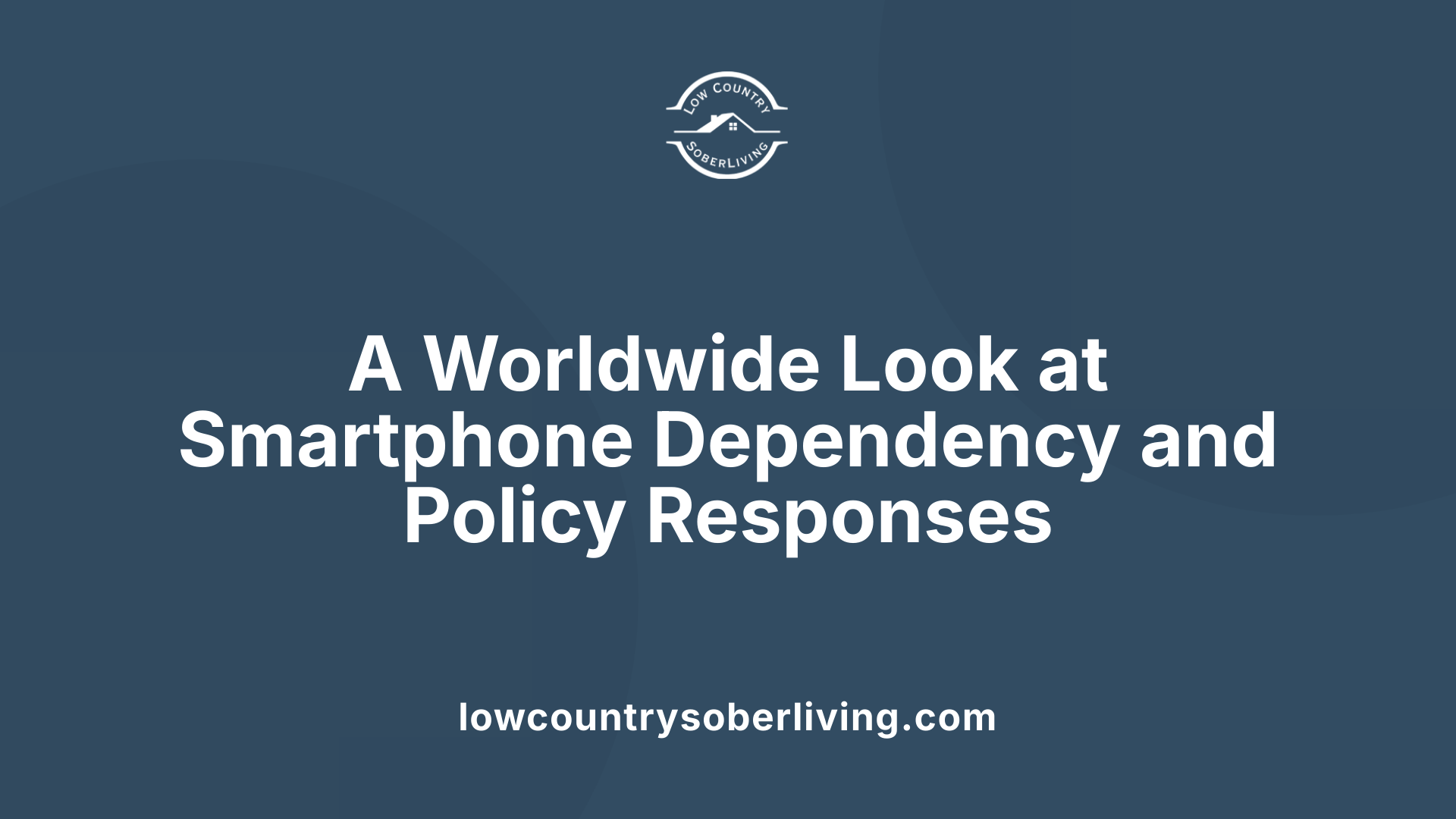
What is the current trend regarding smartphone dependency?
The worldwide trend indicates that smartphone dependency continues to grow at an alarming rate. As of 2024, over 6.8 billion people are digital users, with a substantial portion experiencing some form of dependency. In the United States alone, more than half of adults—around 57%—admit to being addicted to their smartphones, reflecting a global phenomenon.
People are checking their devices with remarkable frequency—on average, around 144 times daily, and in some cases, up to 205 times per day. Such behavior is associated with extensive screen time, often exceeding five hours every day. Particularly among younger groups like Generation Z, daily smartphone usage peaks at approximately 6 hours and 37 minutes, far surpassing the hours spent by older adults.
This dependence has significant implications for mental health, with many individuals reporting issues such as anxiety, depression, and sleep disturbances. For example, 60% of US teens and adults sleep with their phones nearby, often checking them immediately after waking or before sleeping, exacerbating sleep quality problems.
Despite growing awareness of the risks, many users find it difficult to disconnect. A large percentage sleep with their phones, rely on them as their primary internet device, and experience anxiety when separated from their devices. Studies reveal that 50% of teenagers and over 56% of adults perceive themselves as addicted.
Regions vary in their response to these concerns. Countries like China have implemented regulations to limit smartphone use among teenagers, recognizing the potential for addiction. Globally, different cultures exhibit varying attitudes towards smartphone dependence, influenced by social norms and national policies.
While some consumers actively seek to reduce their reliance—citing benefits like better mental health, improved sleep, and time management—resistance remains high. The growing dependency is reinforced through mechanisms like frequent notifications, social media interactions, and dopamine-driven rewards, making cutbacks challenging.
In conclusion, the trend of increasing smartphone dependency is persistent. It affects mental and physical health worldwide and has prompted some governments to develop policy responses. However, cultural attitudes towards technology's role in daily life continue to shape the debate on how best to address this pervasive issue.
Impact of Smartphone Overuse During Global Crises
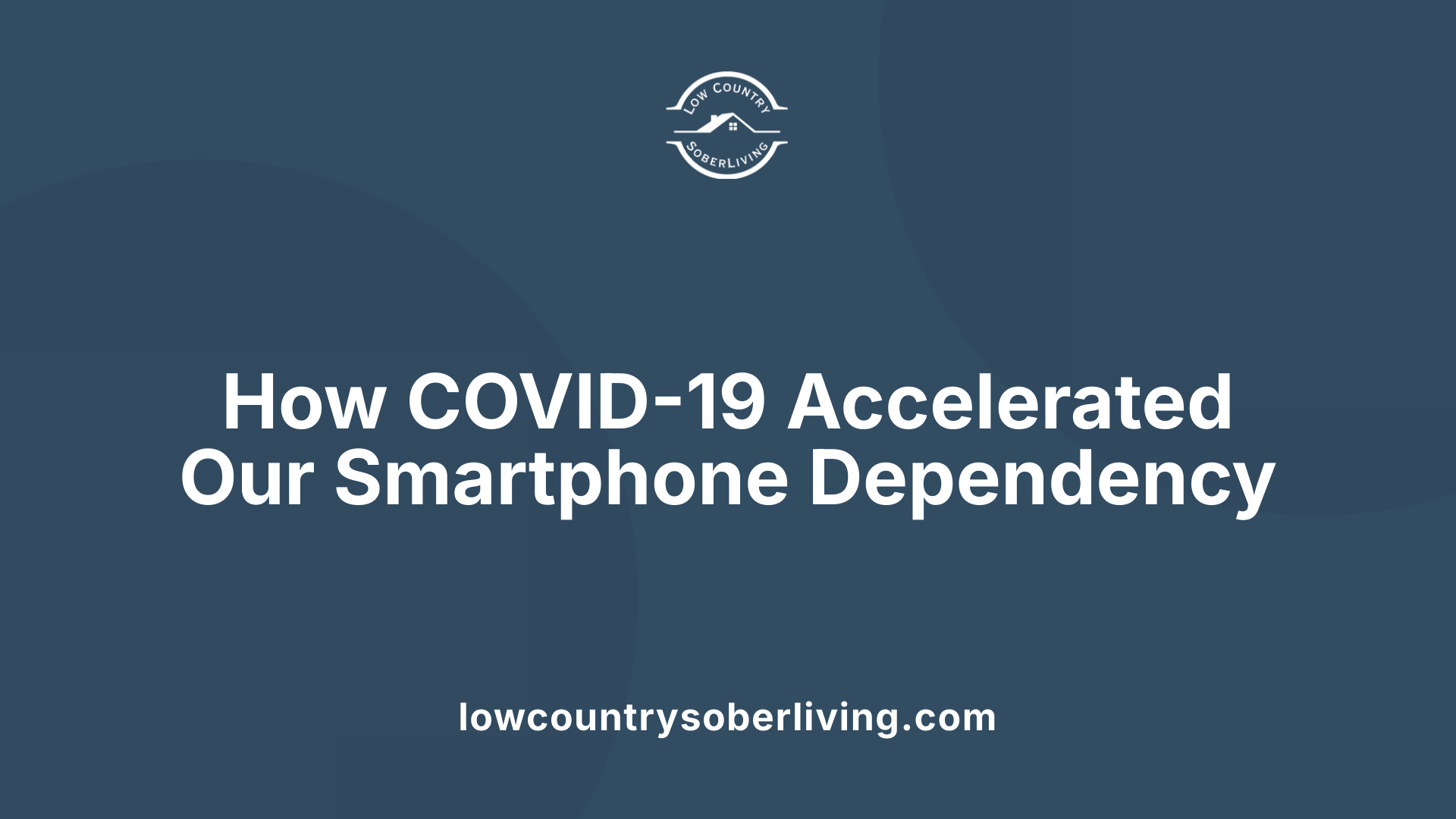
How did the COVID-19 pandemic influence smartphone usage?
The COVID-19 pandemic significantly heightened the reliance on smartphones worldwide. During this period, nearly half of all smartphone activity involved communication, with 49% of users turning to their devices to stay connected with loved ones and colleagues when physical interactions were restricted. Additionally, almost half (47.2%) of users relied on their smartphones to read news, staying updated on rapidly changing pandemic-related information. Mobile shopping also surged, with 34.6% of users making purchases through their devices, and 29% took more photos and videos to document their experiences during lockdowns.
The shift in usage patterns was evident across various demographics. For instance, smartphone owners increased their daily screen time to an average of 5 hours and 16 minutes, a 14% rise from the previous year. Notably, Gen Z individuals spent over six and a half hours daily on their phones, emphasizing their heightened dependence.
How did usage change over time and what activities became more prevalent?
The pattern of smartphone use intensified since 2007, with a notable acceleration during the pandemic. A significant increase was observed in app notifications and messaging, with Virgin Mobile research indicating that users now receive 427% more messages and notifications than a decade ago and send 278% more texts.
Telehealth consultations, online education, social media engagement, and remote work became integrated into daily routines. Most users (86%) checked their devices during conversations with family and friends, highlighting dependency even in personal interactions. The amount of time adults spend on social media also contributed to the overall increase in screen time, with many developing dependencies that could lead to mental health concerns.
Applications of smartphones during crises
Several key applications of smartphones during the pandemic emerged as essential tools:
- Communication (49%): Maintaining personal and professional contact.
- News Consumption (47.2%): Staying informed about health guidelines, policies, and pandemic statistics.
- Mobile Shopping (34.6%): Accessing essentials and non-essentials via mobile apps.
- Media Sharing (29%): Documenting and sharing pandemic experiences.
- Health Management: Using apps for contact tracing, symptom tracking, and telehealth services.
The widespread use of smartphones during COVID-19 underscored their role as vital lifelines in times of crisis, facilitating social connection, information dissemination, and access to services. However, this increased dependency also raised concerns regarding overuse, mental health effects, and physical health issues.
Concerns linked to overuse during a crisis
While smartphones provided critical support during the pandemic, they also contributed to negative outcomes. Over 69% of users reported experiencing health issues related to excessive use, including eye strain, neck pain, sleep disturbances, and heightened anxiety. Furthermore, habits formed during lockdowns, such as constant checking and dependency, persisted beyond the crisis.
In conclusion, the COVID-19 pandemic profoundly influenced smartphone usage patterns, transforming them into essential tools for communication, information, and service access. Yet, this increased use highlighted the importance of managing screen time and addressing dependency risks to maintain mental and physical well-being amid global crises.
Future Outlook and Strategies to Address Cell Phone Addiction
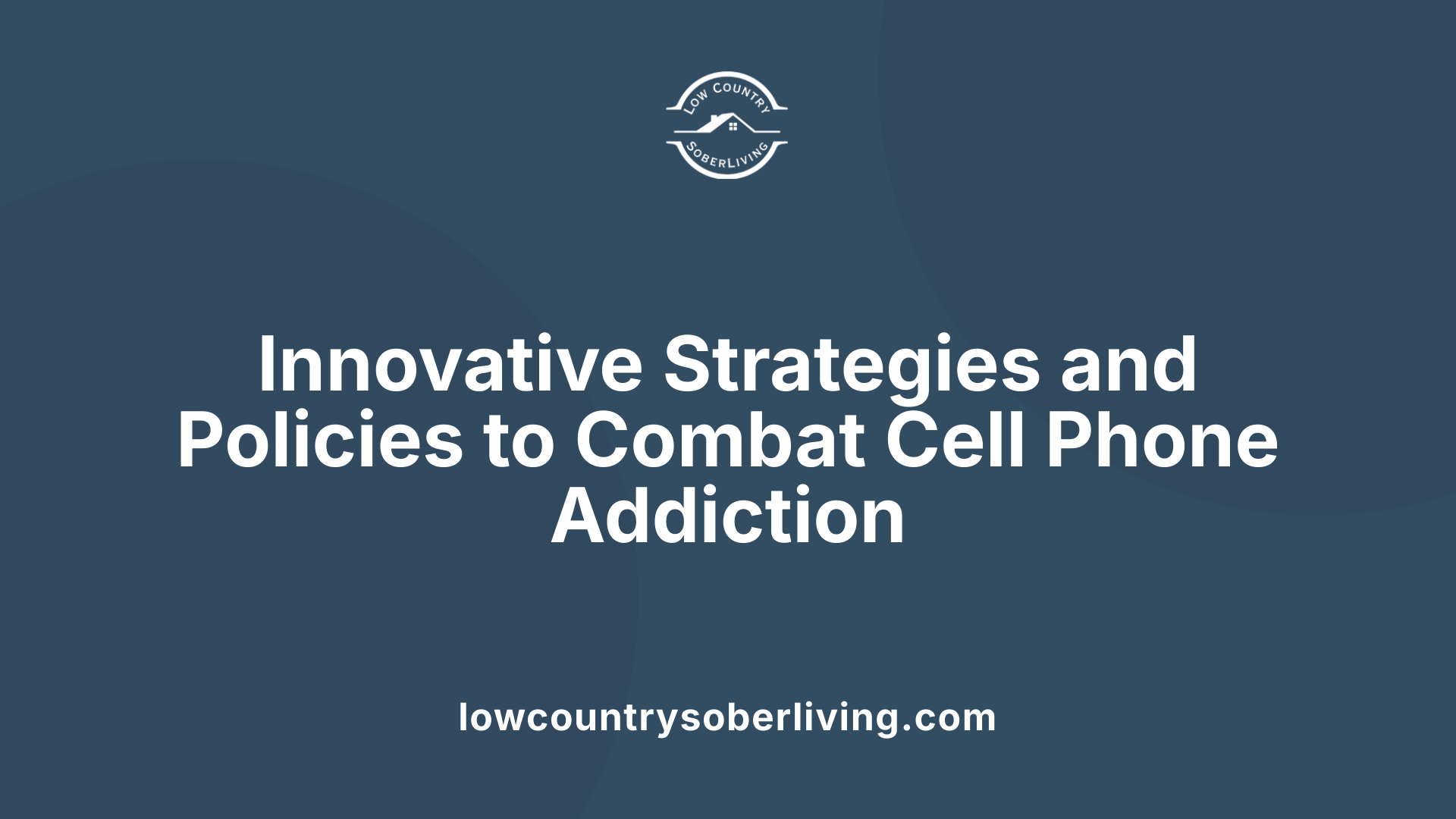
How can increased awareness and education help mitigate cell phone addiction?
Raising awareness about the risks and signs of excessive phone use is crucial in tackling addiction. When people understand how their habits impact mental health, sleep quality, and physical well-being, they are more likely to adopt healthier behaviors. Education campaigns can target various age groups, especially teens and young adults, highlighting the importance of balanced device usage.
Schools, workplaces, and community programs can play a pivotal role by incorporating digital literacy and mental health initiatives. Creating awareness about the psychological and physiological effects, such as dopamine loops and physical strain, encourages individuals to reflect on their habits and seek help if needed.
What are some practical digital wellbeing practices?
Implementing simple daily routines can significantly diminish reliance on smartphones. Strategies include setting designated screen-free times, especially during meals and an hour before sleep, to promote better sleep and mental health.
Utilizing built-in device features like screen time limits and app timers helps users track and control their usage. Regularly disconnecting from notifications and switching off non-essential alerts reduces the dopamine-driven urge to check phones constantly.
Mindfulness practices, such as meditation and focused breathing, can also help individuals become more aware of their device habits and reduce compulsive behaviors. Encouraging users to engage in offline activities like hobbies, exercise, and face-to-face interactions can foster a healthier balance.
How can technological solutions support reduced dependence?
Designing smartphones and apps with features that promote moderation can make a substantial difference. For example, developers can embed tools that remind users of their usage patterns or suggest breaks after prolonged use.
Emerging technologies like apps that monitor and analyze user behavior enable customized recommendations for healthier use. Some devices are now equipped with features that limit usage during certain hours or in specific environments.
Artificial intelligence can also personalize notifications, restricting non-urgent alerts during focus periods, and thus minimizing disruptions. These innovations aim to make device use more intentional and less compulsive.
What policy measures can governments and organizations implement?
Regulatory frameworks can set boundaries on smartphone and social media companies to reduce problematic usage. For instance, policies requiring apps to include usage limit notifications or restricting certain types of notifications can help reduce dopamine-triggered compulsive checking.
Schools and workplaces could adopt policies that promote digital detoxes and mandatory device-free periods, fostering mental health and social connection.
Additionally, public health campaigns can inform the populace about the dangers of excessive device use and promote healthier digital habits. International cooperation might standardize guidelines for limiting gaming and social media use among minors.
| Strategy Type | Actions | Goals | Impact Consideration |
|---|---|---|---|
| Awareness and Education | Campaigns, school programs, community outreach | Increase informed decision-making about device use | Tailored messaging for different age groups and communities |
| Digital Wellbeing Practices | Screen time limits, offline activities, mindfulness | Promote balanced use and mental health | User-friendly tools, accessibility, behavioral change support |
| Technological Solutions | App features, AI moderation, device customization | Reduce compulsive checking, promote focus | Integration with existing devices, privacy considerations |
| Policy Recommendations | Regulations, organizational policies, public campaigns | Establish broader societal norms for healthy use | Balance regulation with innovation, privacy, and freedom |
Anticipating the future of smartphone dependence involves a multifaceted approach that combines awareness, innovative technology, and supportive policies. By fostering responsible use and creating environments that prioritize wellbeing, society can better manage the pervasive presence of smartphones while mitigating their adverse effects.
Conclusion and Call for Action
Summarizing the Impact of Smartphone Usage
Over the past decade, smartphone use has become nearly universal in the United States, with 98% of adults owning some form of a cellphone by 2025. The average American spends over five hours daily on their devices, checking their phones approximately 150 times a day. This intense usage has led to widespread issues such as digital addiction, sleep disturbances, anxiety, and physical ailments like eye strain and hand pain.
Many individuals feel uneasy when separated from their phones, and a significant portion admits to using their devices in inappropriate settings, including during social interactions, while driving, or even in bed. The dependency is so ingrained that over 60% sleep with their phones nearby, and about half of teenagers are addicted, which correlates with rising mental health concerns like depression and anxiety.
Smartphone addiction not only affects mental and physical health but also impacts daily productivity and safety, contributing to distracted driving and reduced face-to-face communication. Despite awareness of electromagnetic radiation hazards, the compulsive and habitual nature of phone use continues to pose risks.
Importance of Using Technology Responsibly
It's crucial to recognize these patterns and their implications. While smartphones are powerful tools for communication, information, and entertainment, improper use can lead to detrimental health and social consequences. Striking a balance between beneficial use and avoidance of excessive dependency is essential for maintaining well-being.
Recommendations for Healthier Phone Habits
To foster healthier relationships with technology, consider implementing the following strategies:
- Limit screen time to less than 2 hours during the day whenever possible.
- Establish tech-free zones or times, especially during meals and before sleep.
- Turn off non-essential notifications to reduce dopamine-driven urges.
- Use apps or device settings to monitor and restrict usage.
- Prioritize face-to-face interactions and create boundaries around digital device use.
- Educate oneself and others about the signs of dependency to promote mindful usage.
By taking proactive steps, individuals can mitigate the negative impacts of smartphone dependency, leading to improved mental health, better sleep, and stronger social connections. For more in-depth solutions, searching terms like "cell phone addiction solutions 2024" can provide updated resources and strategies. Addressing this modern challenge is vital for fostering healthier, more balanced lifestyles amidst the digital age.
Moving Towards a Healthier Digital Future
As cell phone dependency continues to grow, awareness about its various impacts is crucial for fostering healthier relationships with technology. Recognizing signs of addiction, understanding its effects, and implementing strategies for mindful use can mitigate risks. Society must prioritize policies and personal habits that promote digital wellbeing, ensuring that technology remains a tool for connection and growth rather than a source of harm. A balanced approach to smartphone use is essential for safeguarding mental, physical, and social health in the digital age.
References
- 44 Smartphone Addiction Statistics for 2025 [INFOGRAPHIC]
- Phone Screen Time Addiction & Usage - New Survey Data & Statistics
- Smartphone usage and increased risk of mobile phone addiction
- Cell Phone Addiction Facts Explained - Northpoint Washington
- 57+ Incredible Smartphone Addiction Statistics for 2025
- Phone Addiction: Warning Signs And Treatment
- Study finds nearly 57% of Americans admit to being addicted to their ...
- Smartphone Addiction Statistics of 2025 (Updated Data)

